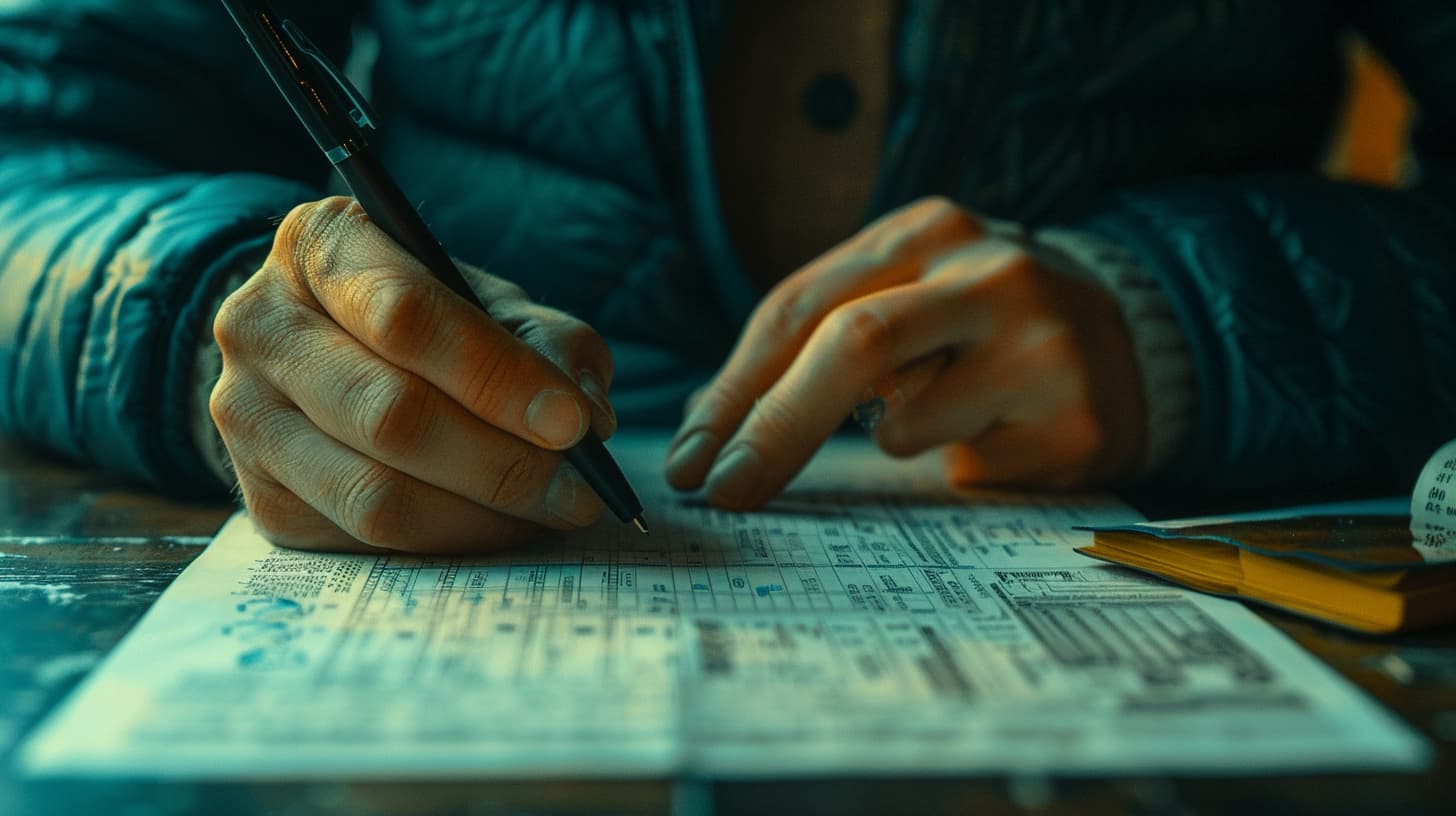Did you know that over 70% of money orders are used for bill payments in the United States? Ensuring you fill out this financial document correctly is crucial for a smooth transaction process.
From accurately writing the recipient’s name to including your address and account number, each step plays a vital role in the successful completion of a money order.
Mastering this form not only guarantees the security of your transaction but also ensures that your payment is processed without any hitches.
Understanding Money Orders
If you’ve ever wondered about the security of prepaid payment options, money orders are a reliable choice. Money orders serve as official documents for payment, offering a secure alternative to personal checks.
To fill out a money order correctly, start by purchasing one from a bank, post office, or retail store. Ensure you have the recipient’s name and address handy. Write this information accurately on the designated lines on the money order. Remember to include your name and address as the purchaser. In the memo line, you can specify the purpose of the payment.
It’s crucial not to forget to sign the money order; your signature validates the document and makes it official. One advantage of using money orders is that they don’t reveal your bank account number, maintaining a level of privacy and security unmatched by other payment methods.
Necessary Information for Money Orders
When filling out a money order, ensure you include essential details such as the payee’s name, address, date of purchase, dollar amount, and your own name and address. Providing accurate information is crucial for secure transactions.
The payee’s address may be necessary for verification and communication purposes, enhancing the overall reliability of the transaction. Each piece of information on the money order plays a vital role in ensuring the financial transaction is processed correctly.
By accurately filling out all the required fields, you contribute to the validation and security of the money order, enabling efficient processing. Remember, thorough completion of these details is key to smooth and successful money order transactions.
Take the time to double-check the information before finalizing the money order to avoid any potential errors or delays in processing. Mastering the inclusion of these details will lead to confident and reliable financial transactions.
Filling Out the Payee Details
To accurately fill out the payee details on a money order, ensure you include the recipient’s full and correct name to prevent cashing issues. It is crucial to pay attention to accurate spelling to avoid processing delays or rejections. Double-checking the payee details will help ensure that the money order reaches the intended recipient securely. Properly filling out the payee information is essential for the money order to be valid and usable. Accuracy in the payee details also aids in tracking the money order and confirming successful delivery.
| Payee Name | Accurate Spelling | Securely |
|---|---|---|
| Include full and correct name | Double-check for errors | Ensure safe delivery |
| Prevents cashing issues | Avoid processing delays | Valid and usable money order |
| Helps track the order | Prevents rejections | Confirms successful delivery |
Providing Your Address
When filling out a money order, remember that providing your address is key.
It ensures clear communication and helps avoid any issues down the line.
Double-check the address format and legibility to ensure accurate delivery.
Address Format
Ensure accurate identification and communication by including your address in the purchaser section of the money order. Here’s how to format your address effectively:
- Clear Display: Print your address legibly to prevent any misinterpretation.
- Include Full Name: Some money orders require both your full name and address for validation purposes.
- Recorded Information: Providing your address ensures all necessary details are accurately recorded on the money order.
- Smooth Processing: Correctly filling out your address helps prevent issues and ensures a smooth transaction process.
Legibility and Clarity
For clear and easily understandable communication, make sure to include your address in the purchaser section of the money order. Writing your address legibly and with clarity is crucial for accurate address information.
When filling out a money order, ensure that your purchaser’s address is complete and easy to read. Legible and clear address details help prevent errors or delays in processing the money order.
The recipient’s address is equally important for the money order official to deliver it to the right person. Remember, providing accurate address information is essential for proper validation and processing.
To ensure smooth processing and delivery, sign your name alongside the purchaser’s signature clearly and accurately.
Adding Account or Order Numbers
To include your account or order number in the memo field of a money order is crucial for accurate processing and tracking. When adding these numbers, you ensure that the transaction is correctly verified and credited. Here’s why including account or order numbers is essential:
- Accurate Record-Keeping: Writing the account number helps in maintaining precise records for both parties involved.
- Efficient Processing: Account or order numbers aid in the swift processing and verification of the transaction.
- Allocation of Funds: Including these numbers ensures that the funds are allocated to the correct recipient or bill.
- Crediting Payments: The account number on a money order guarantees that the payment is accurately credited to the intended account.
Completing the Memo Line
When filling out a money order, remember to utilize the memo line to provide additional information or instructions for the recipient. This section, typically located on the front near the purchaser information, allows you to include details about the purpose of payment, whether it’s for rent, services, or goods.
By filling out the memo line, you can clarify the transaction and ensure that the funds are used for their intended purpose. While this step is optional, it can be quite beneficial for record-keeping and effective communication with the recipient.
Including specific details in the memo line not only aids in transaction clarification but also serves as a form of documentation for both parties involved. Make the most of this opportunity to enhance the transparency and efficiency of your money order transactions by utilizing the memo line wisely.
Signing the Money Order
Ensure that your signature on the money order is clear and matches the information provided to validate the transaction. To master the signing process, follow these key steps:
- Sign Clearly: Your signature should be easily readable to ensure financial institutions can process the money order efficiently.
- Match Information: Make sure your signature matches the details you provided when filling out the money order to avoid any discrepancies.
- Sign in Designated Area: Always sign on the front of the money order in the designated signature section to ensure its official status.
- Follow Specific Instructions: If the issuer provides any specific signing instructions, adhere to them carefully for added security and to facilitate smooth processing.
Retaining Your Receipt
You should make sure to hold onto your money order receipt securely. This receipt serves as crucial proof of payment.
Keeping it safe will help you track your transaction and handle any potential issues that may arise.
Receipt Importance
To ensure proper tracking and proof of payment, holding onto your money order receipt is essential. Here are some key reasons why retaining your receipt is crucial:
- Record of Transaction: The receipt serves as a documented record of the money order transaction.
- Replace Money Order: In case your money order gets lost or stolen, having the receipt can assist in replacing it.
- Store Securely: It’s advisable to store the receipt securely for future reference and peace of mind.
- Detachable Part: Remember that the receipt is the detachable part of the money order that should be kept safe.
Proof of Payment
Retaining your money order receipt is crucial for providing concrete proof of payment and ensuring secure transaction tracking. The money order receipt, which is the detachable part given to the purchaser, holds vital transaction details that are essential for record-keeping and verification purposes.
By retaining this receipt, you can prevent loss, address any errors that may arise, or facilitate the process of getting a replacement if needed. It serves as a valuable document for both the buyer and the recipient, offering a clear trail of the payment made.
Remember to store the money order receipt in a safe place for easy access when required, further enhancing the security and reliability of your financial transactions.
Post-Transaction Money Order Tips
After completing a money order transaction, ensure you keep the detachable receipt in a secure place for future reference and tracking purposes. Here are some post-transaction money order tips to help you master the process:
- Store Safely: Keep the detachable receipt in a safe place to have proof of payment and for tracking purposes.
- Verify Details: Double-check that all the information on the receipt matches what you provided when filling out the money order.
- Utilize for Tracking: If needed, use the receipt to track the money order using the tracking number provided.
- Contact Issuer: Promptly reach out to the issuer’s contact information if any issues arise with the money order to understand the replacement process.
Frequently Asked Questions
How Do You Properly Fill Out a Money Order?
Ensure accurate recipient details, add your information, include account/order numbers in the memo, sign in the designated area, and keep the receipt for tracking. Following these steps when filling out a money order guarantees a smooth transaction.
Can I Fill a Money Order Out to Myself?
Yes, you can fill out a money order to yourself. It’s a secure way to transfer funds without checks or cash. Follow the usual steps with accurate details and signatures just like for someone else.
Who Signs the Back of a Money Order?
To ensure validity and access to funds, you, the recipient, must sign the back of a money order upon receipt. Your signature acts as authorization for cashing or depositing the money order, serving as a crucial security measure.
How Do I Fill Out a Money Order From Walmart?
To fill out a money order from Walmart, write your name, recipient’s name, and amount. Sign it where specified. Keep your receipt. Walmart’s money orders up to $1,000 are a secure, low-cost payment method.
Conclusion
Now that you know how to properly fill out a money order, you can confidently handle your financial transactions with ease.
Remember to double-check all information, including the payee details, your address, and any account numbers, to ensure accuracy.
Don’t forget to sign the money order and keep your receipt for future reference.
Following these simple steps will help you master the form and ensure smooth processing of your money orders.
Related Resources



